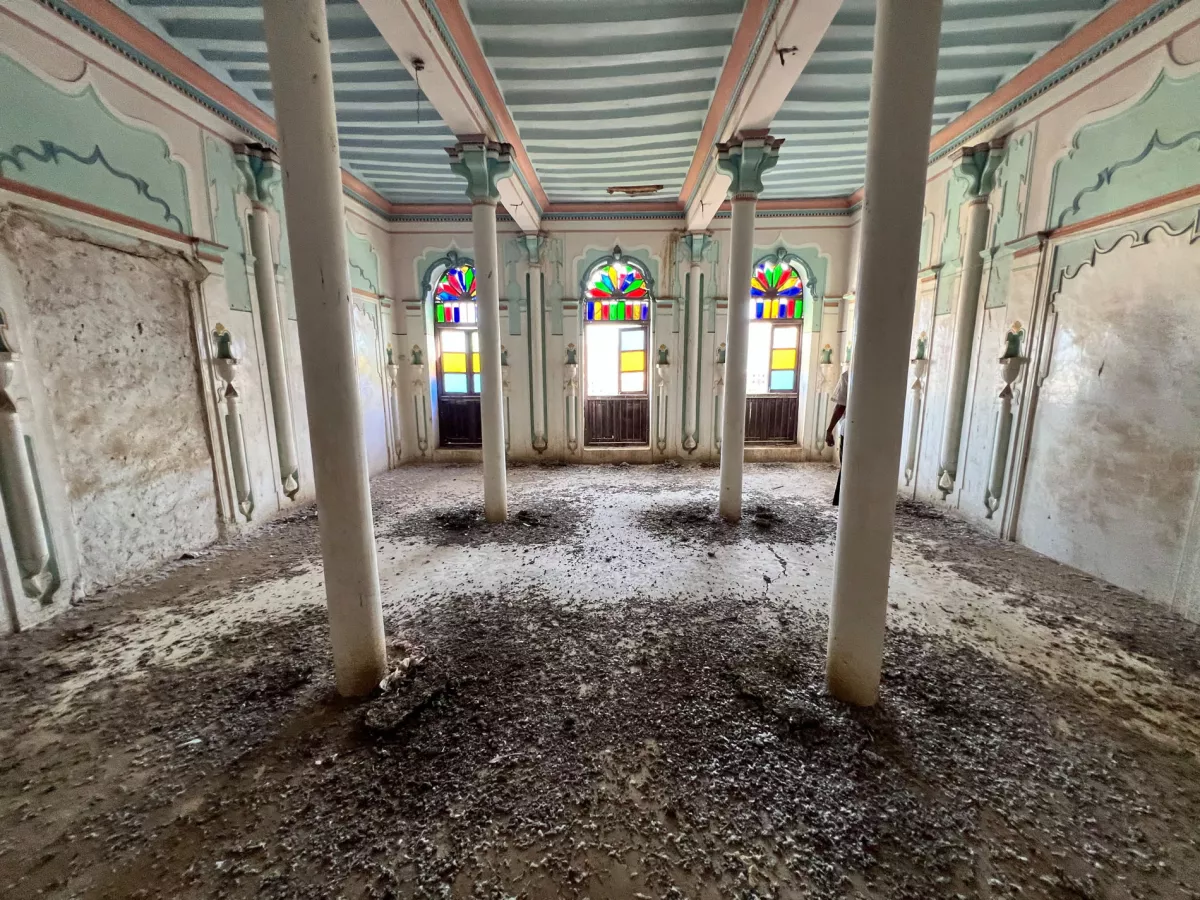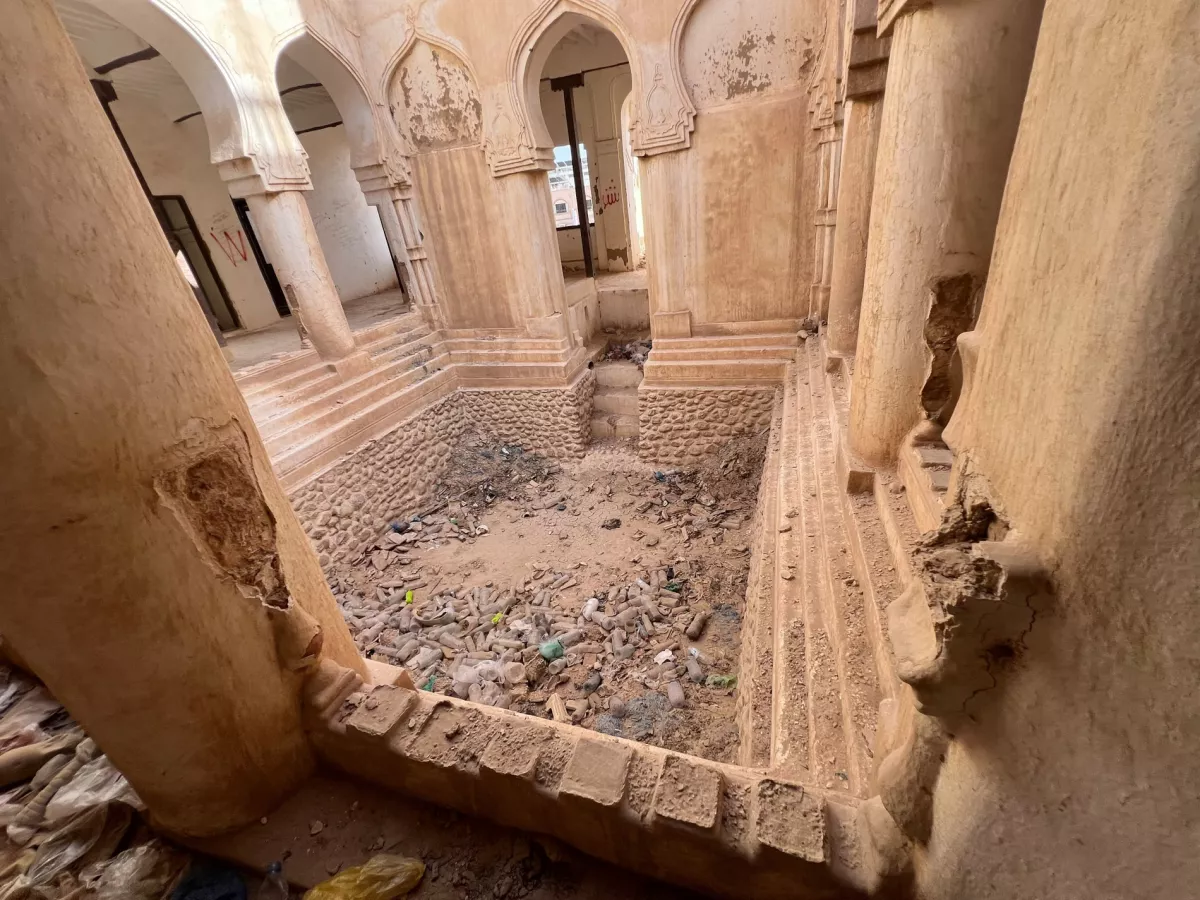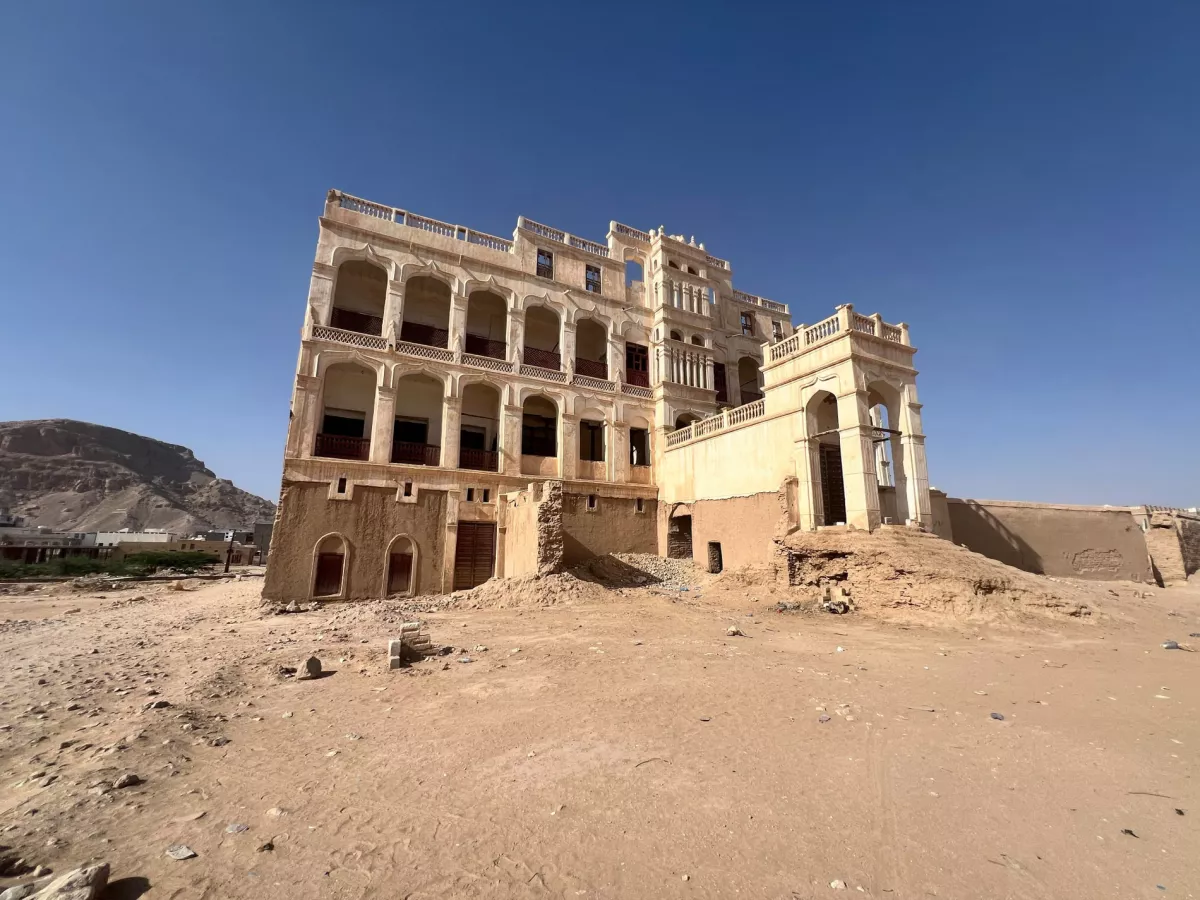Historic mud-brick palaces face destruction in war-torn Yemen PHOTO
The historic mud-brick palaces of Tarim, renowned for their unique architecture blending Yemeni Hadrami and Southeast Asian influences, are rapidly deteriorating, with some already being demolished.
A recent Guardian article highlights the destruction of Sheikh al-Kaf’s palace, a landmark that has long symbolised the city’s rich cultural legacy. The coverage documents how decades of war, neglect, and lack of government support have placed these monuments at risk of disappearing entirely.
Haddad Musaied, a local journalist, witnessed the demolition of Sheikh al-Kaf’s palace firsthand in the Aydid area of Tarim.
“It was heartbreaking to see Tarim’s history and legacy being quietly destroyed,” Musaied said, describing how he could only capture the scene on camera as the once-magnificent building crumbled.
The footage he uploaded to social media reveals the palace’s interiors, including intricate roofs, whitewashed columns, and wooden windows.

“Other countries would have preserved it, even if it were only 30 years old,” he added.
Sheikh al-Kaf’s home was one of 30 mud-brick palaces in Tarim, constructed between the world wars by affluent members of the al-Kaf family, who amassed wealth in Singapore during the late 19th and early 20th centuries.
Mohammed al-Kaf, the palace’s current owner, blamed the Yemeni government for failing to fund necessary repairs. “I blame the government for not supporting us in maintaining the palace,” he said, noting that neighbors had raised concerns about potential damage to nearby homes.

Experts stress the architectural and historical value of these palaces. Ahmed al-Rubaki of the Al-Ranad Foundation for Cultural Development emphasized their unique craftsmanship:
“Builders, decorators, sculptors, painters, carpenters and other artisans contributed their skills to the creation of magnificent palaces.”
With ongoing erosion and demolitions, Rubaki warns that Tarim’s history could vanish.
Tarim, also known as a historic center for Sufi Islam and missionaries who spread Islam across Asia, Africa, and India, was recognized for its cultural significance by Icesco in 2010, which named it the capital of Islamic culture. In August, the city was added to Yemen’s UNESCO World Heritage tentative list, a step toward potential World Heritage recognition.

However, years of conflict have left many palaces abandoned. Hamtut Palace, another al-Kaf family property, shows visible signs of erosion, while Al-Quba Palace, once a hotel, bears the scars of neglect with crumbling walls and a broken swimming pool.
“If these palaces collapse, Tarim’s history will be lost, as they are the city’s last remaining living monuments,” Musaied said.
The General Authority for Antiquities and Museums acknowledges the crisis, describing most of Tarim’s mud-brick mansions as being in a “dilapidated state” and at risk of collapse.
Bahamalah, a government official, explained that the office lacks the funds to buy, lease, or restore the palaces.
“We, like other government bodies struggling with limited resources, are working hard to preserve what can still be saved – by reporting to the concerned authorities and anyone who might help,” he said.
By Sabina Mammadli








